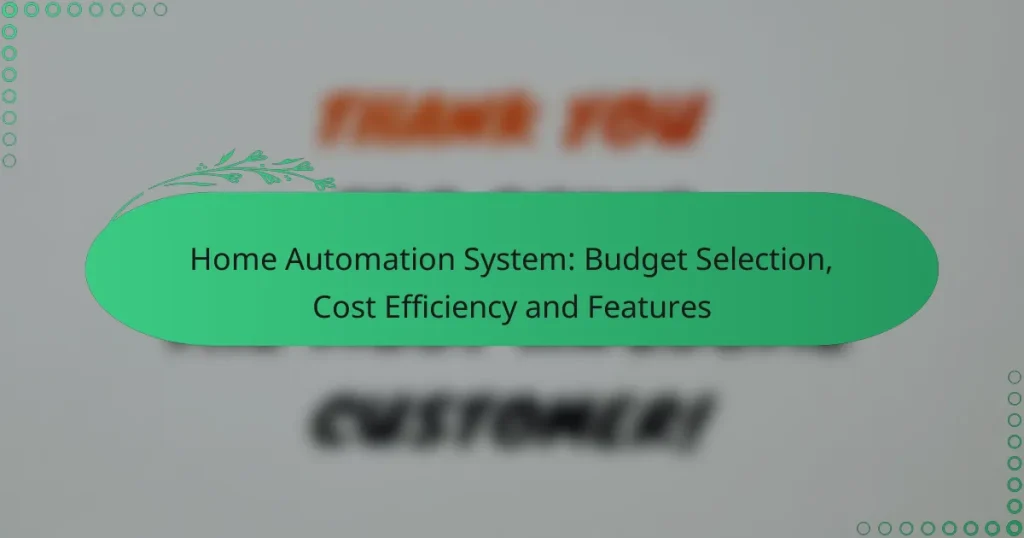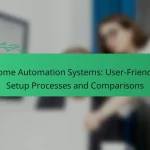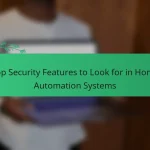Home automation systems provide an excellent opportunity for budget-conscious consumers to enhance their living spaces with essential features at a reasonable cost. By focusing on compatibility, ease of use, and security, these systems can deliver significant value without breaking the bank. Understanding the factors that influence pricing, such as installation and device selection, is crucial for making an informed choice that meets both your needs and budget.
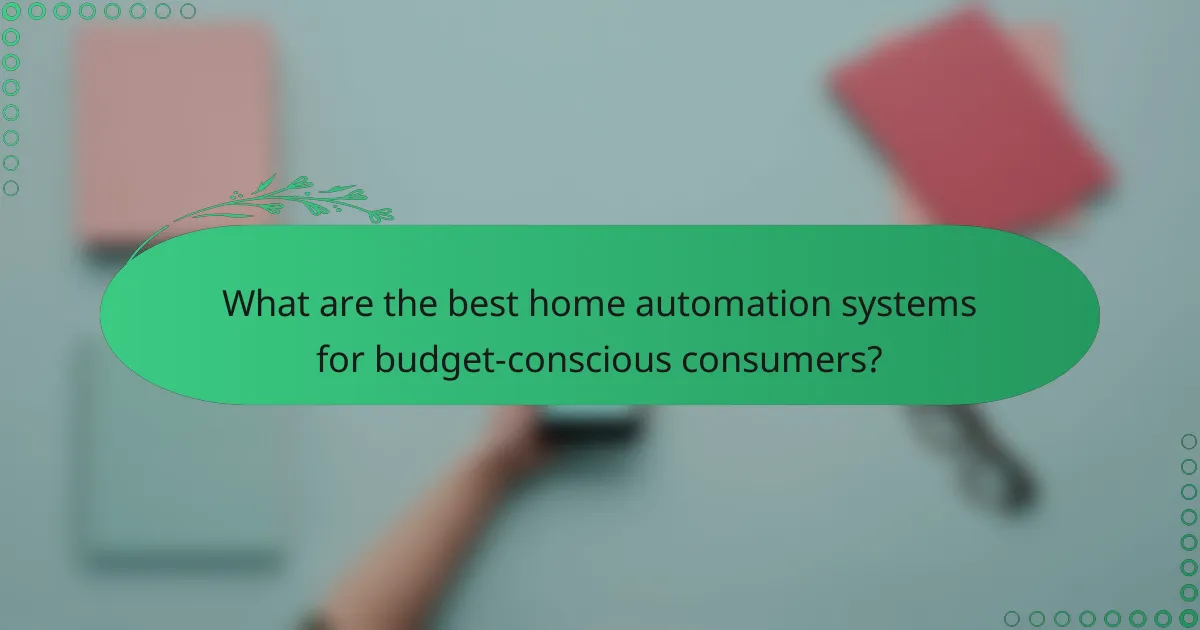
What are the best home automation systems for budget-conscious consumers?
For budget-conscious consumers, the best home automation systems offer essential features at an affordable price. These systems typically prioritize ease of use, compatibility with various devices, and cost efficiency, allowing users to enhance their home without overspending.
Amazon Echo Plus
The Amazon Echo Plus serves as a smart speaker and a hub for various smart devices, making it a versatile choice for budget-conscious users. It supports Zigbee devices, allowing for seamless integration with compatible smart home products.
With a price often in the low hundreds of USD, the Echo Plus provides excellent value, especially for those already invested in the Amazon ecosystem. Users can control lights, thermostats, and more through voice commands or the Alexa app.
Google Nest Hub
The Google Nest Hub combines a smart display with a home automation controller, making it a practical option for budget-minded consumers. It allows users to manage their smart devices visually and through voice commands with Google Assistant.
Typically priced in the mid-range of USD, the Nest Hub is ideal for those who prefer a visual interface. It can display information, play music, and control compatible devices, enhancing the overall smart home experience.
Samsung SmartThings
Samsung SmartThings is a comprehensive platform that connects various smart devices, making it a strong contender for budget-conscious consumers. The SmartThings Hub can often be found at a reasonable price, allowing users to manage multiple devices from a single app.
This system supports a wide range of third-party devices, providing flexibility and scalability. Users can automate routines and monitor their homes efficiently, making it a cost-effective solution for comprehensive home automation.
TP-Link Kasa Smart
TP-Link Kasa Smart offers a range of affordable smart home products, including plugs, bulbs, and cameras. These devices are easy to set up and integrate with Alexa and Google Assistant, making them accessible for budget-conscious consumers.
With individual devices typically priced under 50 USD, Kasa Smart products allow users to start small and expand their systems as needed. This incremental approach helps manage costs while enhancing home automation capabilities.
Wyze Home Monitoring
Wyze Home Monitoring provides an affordable solution for home security and automation, with a subscription model that keeps costs low. Users can access a variety of smart devices, including cameras and sensors, all managed through the Wyze app.
With a starting price often below 20 USD for individual devices, Wyze allows users to build a comprehensive security system without breaking the bank. Their budget-friendly pricing and straightforward setup make it an attractive option for those looking to enhance home safety and automation.
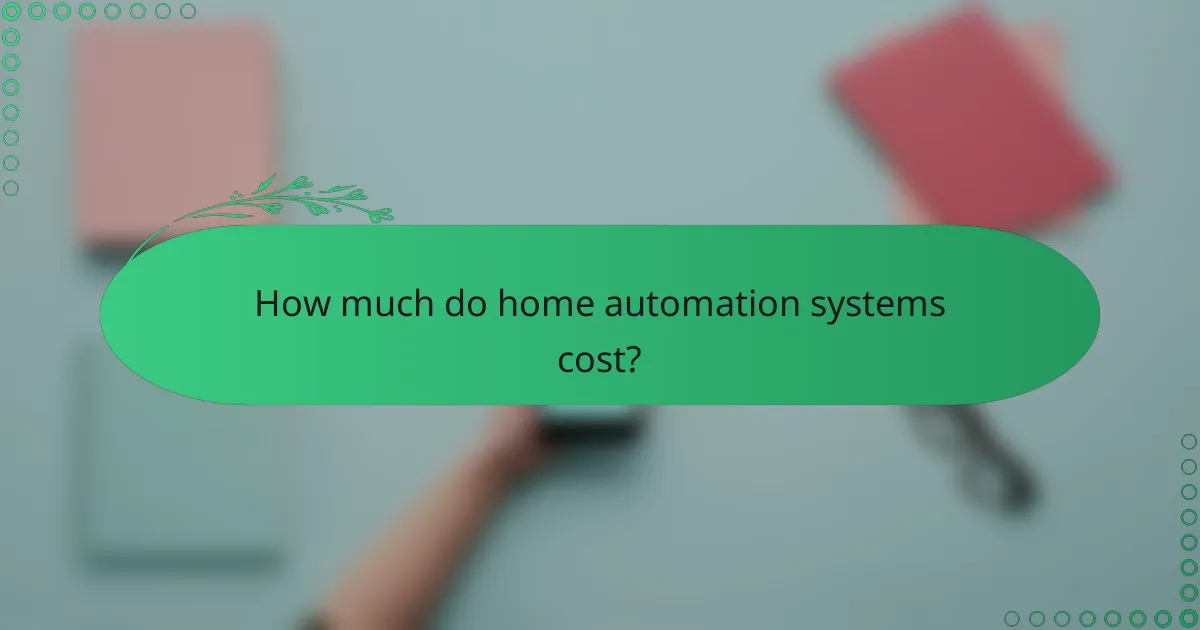
How much do home automation systems cost?
Home automation systems can vary widely in cost, typically ranging from a few hundred to several thousand dollars depending on the complexity and features. Key factors influencing the price include installation, device selection, and any ongoing subscription fees.
Average installation costs
The average installation costs for home automation systems can range from around $100 to $1,000 or more, depending on the system’s complexity and the professional services required. Simple setups may only require a few hours of labor, while comprehensive systems that integrate multiple devices can take significantly longer.
DIY installation is an option for those comfortable with technology, which can save on labor costs. However, ensure that you follow manufacturer guidelines to avoid potential issues.
Monthly subscription fees
Monthly subscription fees for home automation services typically range from $10 to $50, depending on the features and level of service provided. Basic plans may cover remote access and monitoring, while premium plans often include advanced features such as cloud storage for security footage and smart home integrations.
When selecting a subscription plan, consider your specific needs and the devices you plan to use. Some systems may not require a subscription at all, while others may offer significant benefits for a small monthly fee.
Cost of individual devices
The cost of individual devices for home automation can vary significantly, with smart bulbs starting around $10 and advanced security cameras costing $100 or more. Other devices, such as smart thermostats and locks, typically range from $50 to $300.
When budgeting for devices, consider the total number you need and whether you want to invest in more expensive, feature-rich options or stick with basic models. Look for bundles or sales to maximize your investment.
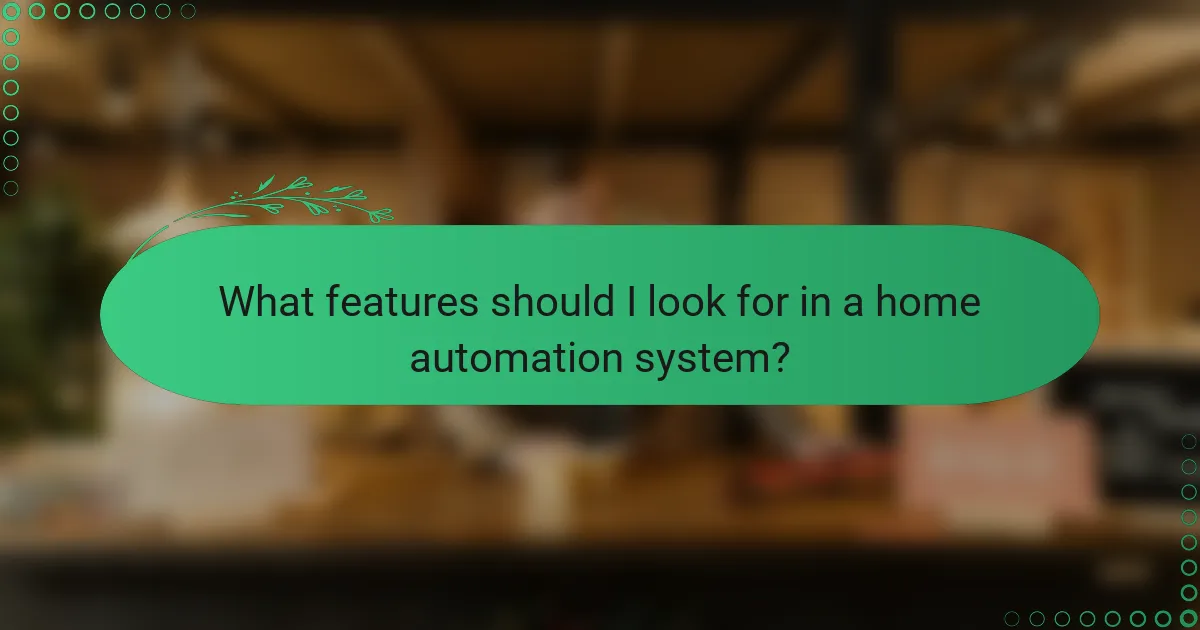
What features should I look for in a home automation system?
When selecting a home automation system, prioritize compatibility with existing devices, ease of use, security measures, and voice control options. These features significantly impact the system’s effectiveness and your overall experience.
Compatibility with smart devices
Compatibility is crucial for a home automation system, as it determines how well the system integrates with your existing smart devices. Look for systems that support a wide range of devices, including lights, thermostats, cameras, and locks from various manufacturers.
Check for compatibility with popular standards like Zigbee, Z-Wave, and Wi-Fi. A system that supports multiple protocols can offer greater flexibility and future-proofing as new devices emerge.
User-friendly interface
A user-friendly interface is essential for managing your home automation system effectively. Look for systems that offer intuitive mobile apps or web interfaces that allow easy control and monitoring of devices.
Consider systems that provide customizable dashboards and straightforward navigation. A good interface should enable you to set up automation routines and schedules without requiring extensive technical knowledge.
Security features
Security features are vital to protect your home and personal information. Ensure the system includes strong encryption protocols, secure user authentication, and regular software updates to guard against vulnerabilities.
Some systems offer additional security features like two-factor authentication and alerts for unauthorized access attempts. Evaluate these options to enhance your home’s safety and your peace of mind.
Voice control capabilities
Voice control capabilities can significantly enhance the convenience of a home automation system. Look for systems that are compatible with popular voice assistants like Amazon Alexa, Google Assistant, or Apple Siri.
With voice control, you can manage devices hands-free, making it easier to adjust settings while multitasking. Ensure the system supports a wide range of voice commands for maximum functionality and ease of use.
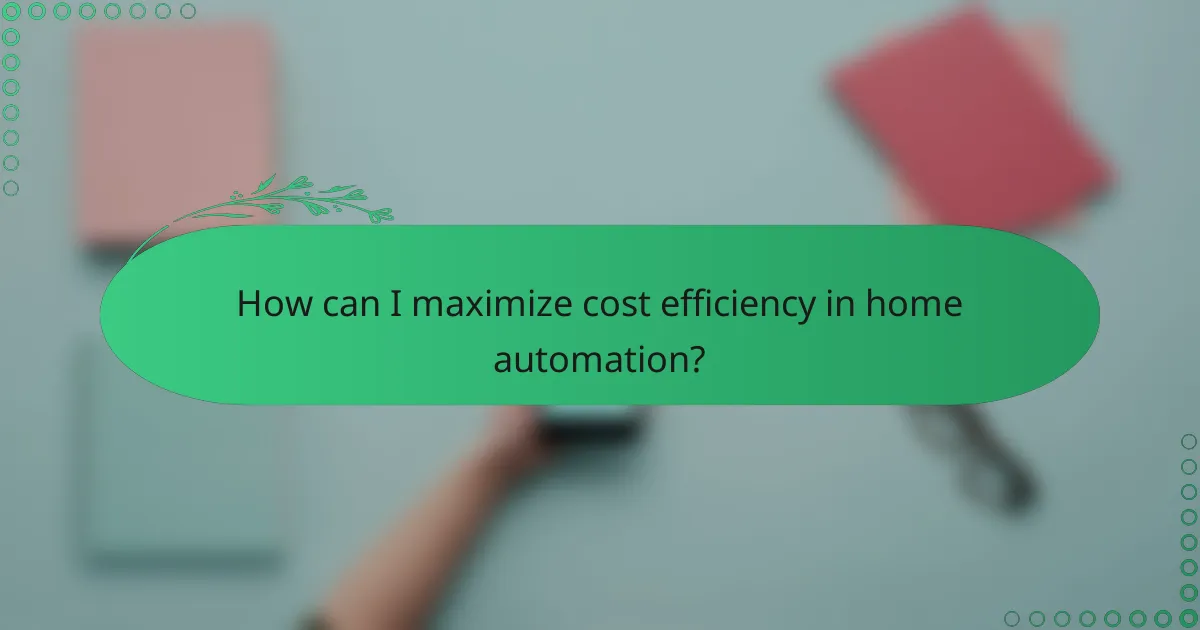
How can I maximize cost efficiency in home automation?
To maximize cost efficiency in home automation, focus on selecting devices that reduce energy consumption, implementing smart scheduling, and integrating new technology with existing systems. These strategies help lower utility bills and enhance the overall functionality of your home automation setup.
Choosing energy-efficient devices
Selecting energy-efficient devices is crucial for reducing long-term costs in home automation. Look for products with high energy ratings, such as those certified by ENERGY STAR, which can save you significant amounts on electricity bills over time.
Consider smart bulbs, thermostats, and appliances that automatically adjust their energy usage based on your habits. For example, smart thermostats can learn your schedule and optimize heating and cooling, potentially saving you around 10-15% on your energy costs.
Utilizing smart scheduling
Smart scheduling allows you to automate device operation based on your daily routines, enhancing both convenience and cost efficiency. For instance, you can program lights to turn off when you leave home or set your thermostat to lower temperatures during the night.
Utilizing scheduling features can lead to energy savings of up to 20% by ensuring devices are not running unnecessarily. Most smart home systems offer user-friendly interfaces to set these schedules easily.
Integrating with existing systems
Integrating new devices with your existing home systems can enhance functionality and save costs. Ensure that new devices are compatible with your current setup, whether it’s a smart hub or individual devices, to avoid unnecessary replacements.
For example, connecting smart lighting to a home security system can allow lights to flash when an alarm is triggered, adding security without the need for additional devices. This integration can streamline operations and reduce the need for multiple separate systems, ultimately saving you money.

What are the prerequisites for setting up a home automation system?
To set up a home automation system, you need a stable internet connection, compatible smart devices, and appropriate electrical considerations. These elements ensure that your system operates smoothly and efficiently.
Stable internet connection
A reliable internet connection is crucial for a home automation system to function effectively. Most smart devices require a stable Wi-Fi network to communicate with each other and with your control hub.
Consider using a broadband connection with speeds of at least 25 Mbps for optimal performance. If your home is large or has multiple floors, a mesh Wi-Fi system can help eliminate dead zones and maintain strong connectivity throughout.
Smart device compatibility
Ensure that the smart devices you choose are compatible with your home automation system. This includes checking for support of common protocols such as Zigbee, Z-Wave, or Wi-Fi.
Before purchasing, verify that the devices can integrate with your chosen hub or platform, such as Google Home, Amazon Alexa, or Apple HomeKit. This compatibility will streamline your setup and enhance functionality.
Electrical considerations
Assess your home’s electrical system to support smart devices, especially those that require hardwiring, like smart thermostats or lighting. Ensure that your electrical panel can handle the additional load without overloading circuits.
It’s wise to consult with a licensed electrician if you’re unsure about your home’s electrical capacity. They can help you identify any necessary upgrades or safety measures to accommodate your new devices.
